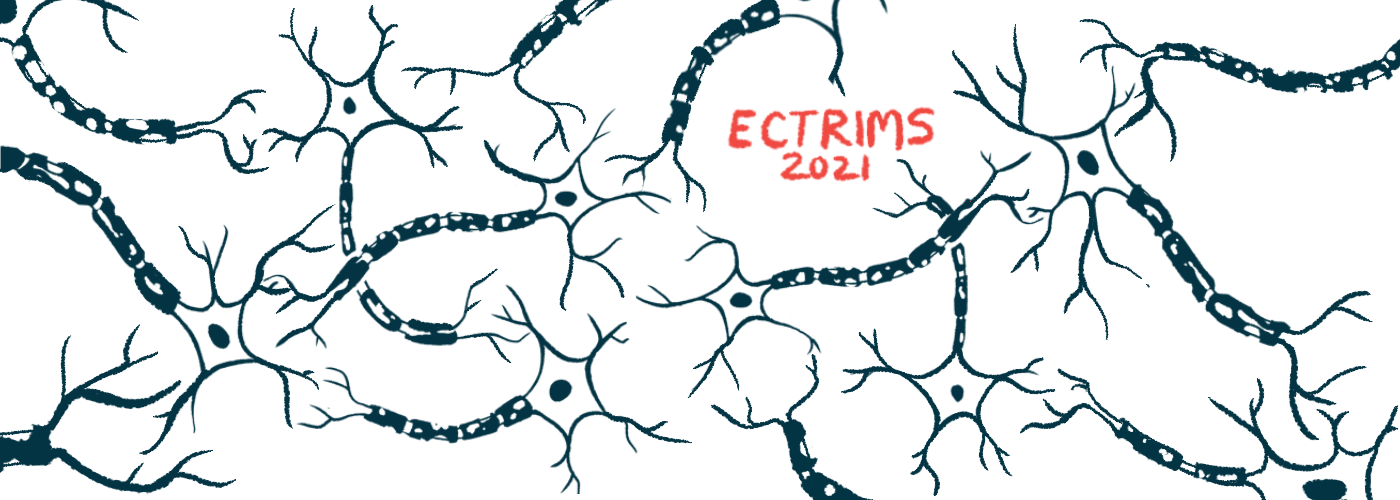#ECTRIMS2021 – Greater B-cell Depletion With Uplizna Linked to Better Outcomes
Written by |

Treatment with Horizon Therapeutics’ Uplizna (inebilizumab) leads to a rapid and sustained drop in immune B-cells in adults with neuromyelitis optica spectrum disorder (NMOSD), data from the N-MOmentum Phase 2/3 clinical trial show.
Notably, while all Uplizna-treated patients experienced significant clinical benefits, those with greater B-cell depletion showed lower relapse rates and fewer brain lesions than those with higher B-cell numbers. These differences were attenuated, or reduced, with longer-term treatment.
“This analysis provides additional evidence that B cells play a central role in NMOSD, and that there is a link between the depth of B cell depletion in the blood and long-term clinical outcomes,” Jeffrey Bennett, MD, PhD, of the University of Colorado School of Medicine, said in a press release.
Most telling, Bennett said, were B-cell levels at the end of 28 weeks, or about seven months, which were “predictive of stable and deep B-cell depletion continuing through long-term exposure.”
“These data contribute to our mechanistic understanding of NMOSD as a B-cell-mediated disease and provide greater evidence that Uplizna is working directly against those underlying disease mechanisms known to have the greatest impact on patient outcomes,” said Quinn Dinh, MD, vice president of Horizon’s international medical affairs and pipeline launch strategy.
“Our ongoing research efforts in this area aim to improve care for patients today while also preventing the damage of NMOSD over time,” Dinh added.
The findings were presented by Bennett in a Horizon-funded poster at the 37th Congress of the European Committee for Treatment and Research in Multiple Sclerosis (ECTRIMS), held virtually Oct. 13–15.
The poster was titled “Extent of B-cell depletion is associated with disease activity reduction in neuromyelitis optica spectrum disorder: results from the N-MOmentum study.”
NMOSD is an autoimmune disease in which the immune system wrongly produces antibodies against proteins in neuron-supporting cells, causing inflammation in the optic nerve and spinal cord.
Uplizna is a B-cell depleting therapy approved in the U.S. in 2020 for adults with NMOSD who test positive for antibodies against aquaporin-4 protein (AQP4), the most common target of NMOSD-related antibodies.
Administered directly into the bloodstream (intravenously) twice per year, the therapy works by targeting CD19, a protein found at B-cells’ surfaces, leading to their death and thereby lowering antibody production.
Uplizna’s approval had been based on data from the N-MOmentum Phase 2/3 trial (NCT02200770), which tested the therapy in 230 adults with NMOSD. Participants were randomly assigned to receive either Uplizna (174 patients) or a placebo (56 patients) on days 1 and 15.
The trial met its main and several secondary goals, with Uplizna significantly reducing the risk of NMOSD attacks, disability worsening, brain lesions, and NMOSD-related hospitalizations after about 6.5 months, compared with a placebo.
After this randomized treatment period, 216 participants — more than 90% from each group — choose to enroll in the trial’s open-label portion, in which all were given Uplizna every six months for at least two years.
Now, Bennett and his colleagues evaluated whether the extent of Uplizna-induced B-cell depletion influenced the clinical outcomes of N-MOmentum’s participants, Included in the examination were annualized attack rates and the number of new or enlarging brain lesions.
For Uplizna-treated patients, the researchers also pooled data from patients originally assigned to the therapy and those who started treatment six months later, during the open-label portion.
The results showed that, compared with a placebo, Uplizna “resulted in a rapid and profound B-cell depletion,” which was seen as early as the first week of treatment and was sustained with repeat dosing, Bennett said.
Most Uplizna-treated patients showed four or fewer B-cells per microliter (normal range, 74.4–441.1 cells/microliter) at the end of the randomized period, and these low counts were “predictive of stable and deep B-cell depletion continuing through long-term exposure,” Bennett said.
Of note, patients with more than four B-cells/microliter eventually achieved sustained deep B-cell depletion with longer-term treatment (about two years).
Participants with deep B-cell depletion had “a decreased attack rate and annualized rate of new or enlarging [brain] lesions” at six months of treatment and “a faster decline” in these measures with continued treatment, compared with those with less profound B-cell depletion, Bennett said.
However, all participants showed similar attack rates and numbers of brain lesions after 2.5 years of Uplizna treatment, regardless of the extent of B-cell depletion after the first dosing interval.
This means that patients who did not achieve deep B-cell depletion after the first dosing interval eventually caught up with those who attained such depletion with longer-term treatment.
Notably, 2.5 years of treatment with Uplizna reduced patients’ annualized attack rate by 97% and the number of new or enlarging brain lesions by 73%, compared with the placebo in the trial’s randomized period.
These findings suggest that achieving deep and persistent B-cell depletion with Uplizna is beneficial to NMOSD patients, being “associated with early, improved outcomes,” Bennett said.
The data also highlight that the “depth and duration of B-cell depletion may be an important factor in optimizing treatment with anti-CD19 therapy,” Bennett said.
As such, “regular monitoring of B-cell counts may provide a valuable approach to ensure the most effective use of [Uplizna] in managing NMOSD,” the researchers wrote.







